#Indo-European Mythology
Explore tagged Tumblr posts
Text

Illuyanka, the 248th Known One.
#Illuyanka#Hittite#mythology#dragon#smaugust#snake#its related to hydras and typhon etc so im forshadowing those designs here with the segments made of multiple eels#eel#Proto-Indo-European#992#octem 124#aer 4#Anatolia#Turkey#the Known Ones
290 notes
·
View notes
Text
The Otherworld, Fea/Fey and what little we know about Celtic mythology

Okay. I was now asked more than once about this. Which is fair. What is the Otherworld? I have noted this word more than once in regard to Maria and her magic - and if you have read any of my writing on Castlevania you might have stumbled across the word as well, as I reference it fairly often there as well.
If you are one of those five people who came originally from Twitter to follow me here, you might also know that a friend and I work on a comic called Otherworldly. So, let me talk about the Otherworld.
The Celtic Otherworld
The general concept and name of the Otherworld comes from the celtic mythology. Once more we know most about it from the Gaelic mythology, because most of the oral tradition that has survived is from the Scots and the Irish. And you might even have heard at some point of Tír na nÓg, which was one of the names for the Gaelic variation of this myth. If you were at any point a fan of Lord of the Rings you might also be aware of the concept, despite Tolkien using another name for it.
Generally speaking the Otherworld is a world of eternal youth and beauty, in which the fae/fey, as well as the gods of this religion tend to live. But in some cases humans wander into the Otherworld as well. Maybe because they get invited into it by a fae of some variation of sidhe, or just because they get lost. In those cases we might have stories in which children get lost in the forest and years later stumble out of the forest not having aged a single day.
Something that is maybe specific interesting for Maria: The Gaulic mythology (so the one of the French celts) actually said, there were two Otherworlds: The White World and the Black World. The White World was a sort of heaven, the Black World a sort of hell - even though that is obviously just once more interpreting it through a Christian lense.
Generally speaking this was less of an afterlife. While the souls of the deceased would generally pass through the otherworld, most of them would then go on (possibly for reincarnation). Though we have some stories of heroes that remain in the Otherworld and become sorts of gods.
The Otherworld as a General Concept
This is the moment where I will once again talk about Indo-European mythology. As you might have heard: Pretty much all cultures that existed in Europe and around the Mediterranean and some part of Asia go back to one culture that originally lived in the area that is today's Ukraine, which in anthropology is called the Proto-Indo-European culture. And we are fairly certain, that the Otherworld at the very least goes back to the mythology that this culture has had - if not even further back, as similar concepts are even found outside of these connected cultures.
Basically, these cultures generally have a realm or parallel world in which the gods reside and at times all sorts of other paranormal creatures.
This is why some authors, like me, use this parallel in their writing. Of course we are well aware that anthropoligically speaking these parallels are there, because the cultures have the same root and have influenced each other. But of course, as a fantasy writer it is hard to not look at it and go: "Well, what if all these cultures have this concept because it is real?!"
Fae/Fey
Lastly we should talk about the Fae/Fey. Again, the wording goes back to the Celts. Fae/Fey is generally a word that is often used today as "fairy", though technically the fae in the mythology are usually not little humanoids with wings. Mainly they seem to have been a sort of spirit-like being, some of which showed as humans with otherworldly beauty and eternal youth. This is mainly where the elves in fantasy come from. Some could also appear as both animals or monsters of sorts.
The general thought is, that they probably anthropologically speaking fae probably go back to a spiritual religion, in which nature spirits were revered in different ways - and then got personified partly as fae or gods.
And if we are talking fantasy writers once more: Given those parallels with the Otherworld, especially Urban Fantasy does this little trick quite often, where pretty much all spiritual beings from all sorts of religions just get qualified as "fae", no matter from what culture they come. So Yokai from Shinto might also qualify as fae in this way of looking at it.
And that in the end brings us back to Maria, whose familiars obviously were originally based in East Asian mythology, while the way she summons them clearly is more linked to the celtic culture.
It will be really interesting to see (if the Netflix algorithm decided that it would be worth it for Netflix to let Powerhouse make another season) how this is going to tie back to Maria's backstory eventually.
#castlevania#castlevania netflix#castlevania nocturne#maria renard#celtic mythology#celtic history#indo european#mythology#anthropology#archeology#otherworld#fae
31 notes
·
View notes
Text
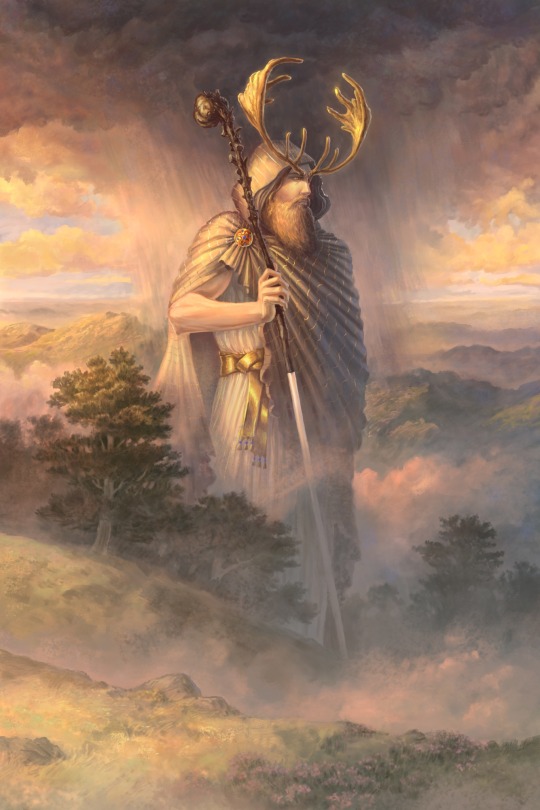
The Dagda
#the dagda#celtic#pagan#indo-european#heathen#paganism#mythology#aesthetic#ethereal#druid#ire#ireland#irish#scottish#scotland#painting#illustration
129 notes
·
View notes
Text
What does it mean, the 7 Classical Planets of Star Wars?
The storyline of Star Wars follows the progression of the Seven Classical Planets...
[NB: Throughout I use Star Wars to refer exclusively to what was later subtitled Episode IV: A New Hope.]
Here's how it plays out:
Before the movie even starts, the opening crawl tells us that The Moon (Princess Leia) is on a dangerous mission to reveal the secret (deliver the plans) of Darkness (the Death Star, a planet-killing space station that happens to be the size of a “small moon”).
The movie begins mid-action as The Moon (Princess), about to be captured by the Evil Empire, dispatches a distress call through her trusted agent Mercury (R2-D2), who escapes with his companion Venus (C-3PO) to a desert planet where they accidentally encounter The "New" Sun (Luke Skywalker) while searching for The "Old" Sun (Obi-Wan Kenobi), who makes contact with Mars (Chewbacca) in order to hire Jupiter (Han Solo) to pilot them on their quest to defeat Saturn (Darth Vader).
That's Star Wars in a nutshell, innit ?
Here's a character-by-character breakdown:
Princess Leia is The Moon, the wise and luminous one. Dressed in flowing white gowns that evoke moonbeams, her holographic projection further magnifies her iridescence. The Moon (Princess) is taken prisoner (the damsel in distress, New Moon, swallowed by Darkness) on the moon-sized battle station, until she's rescued and emerges as a leader of a coordinated counterattack (the warrior princess, Full Moon, overcoming Darkness).
2. R2-D2 is Mercury, the traveler and communicator. His slow-rolling chrome chassis evokes Mercury's light metallic surface and slight orbit, while his multi-coloured lights mirror the planet's unique prismatic shimmer. Mercury (Artoo) is closest to the The Moon (Princess), Venus (Threepio), and The Sun (Kenobi/Skywalker), and his mission to find The “Old” Sun (Obi-Wan Kenobi) sets in motion the entire chain of events that brings the heroes into alignment on their odyssey. On top of that, Artoo is an astromech droid that's purpose-built for servicing spacecraft, so he's specifically designed to travel.
C-3PO is Venus, the compassionate one, whose gold-plated figure evokes the copper glow of Venus. Although he's a mechanical being, he expresses great emotion (more than any of the humanoid characters) including affection and persistent concern for his counterpart Artoo, the Princess, and his new master Luke.
Obi-Wan Kenobi and Luke Skywalker are The Twin Suns: Because the fictional / mythical Tatooine has two suns, it's appropriate that the story include two Suns as twin heroes. (And of course the planet of the Twin Suns is a desert world.) • 4a. Obi-Wan Kenobi is The "Old" Sun, the aging master (Jedi Knight) near the end of his journey, hiding in the wilderness in order to watch over and protect The “New” Sun (Skywalker). The “Old” Sun (Kenobi) once had a master-apprentice relationship with his fallen pupil Saturn (Vader), which he later exploits in order to save the other heroes. He carries and preserves the ancient mystical teachings (the Jedi code), and develops a master-apprentice relationship with The “New” Sun (Skywalker) to whom he passes on that knowledge. • 4b. Luke Skywalker is The "New" Sun, the young novice (Jedi-in-waiting) at the beginning of his journey. He enters a master-apprentice relationship with the wise old hermit The “Old” Sun (Kenobi). He harbours a deep grudge after learning that Saturn (Vader) killed his father — which deepens when the Evil Empire murders his family, and further still when he witnesses Saturn (Vader) slay The “Old” Sun (Kenobi) before his very eyes. The “New” Sun (Skywalker) hatches the plan to rescue The Moon (Princess) from Darkness (the Death Star), and in the end he overcomes Saturn (Vader) with a little help from his friends Jupter (Solo) and Mars (Chewbacca), making the magic shot that defeats the bad guys and saves the day for the good guys.
Chewbacca is Mars, the warrior. I think this is self-explanatory. He's loyal, ferocious, courageous, and a skilled marksman — and his species (Wookie) is a renowned warrior race. Plus his brown fur could be likened to the rusty hue of the Martian surface.
Han Solo is Jupiter, the chief. He's bold, brave, outspoken, and exudes a godlike arrogance in his own self-determination — although in the end he abandons self-interest to serve a greater cause. Solo captains the vessel (the Millennium Falcon) that carries the heroes on their journey, and is called upon to provide them safe passage. He proves skilled at evading trouble, and when the heroes are eventually captured by Darkness (the Death Star) he boldly charges to their defence and aids in their escape. Although he feigns wanting to stay out of their fight, in the end he shows his true colours by returning to lend The “New” Sun (Luke) a helping hand against Saturn (Vader).
Darth Vader is Saturn, the ultimate villain. He is the fallen mater (Jedi Knight) who uses his mystical power for evil (the Dark Side). His pursuit of The Moon (Princess) kicks off the story before the beginning, and his crusade to destroy the good guys (Rebel Alliance) brings him into direct conflict with first The “Old” Sun (Kenobi) and then The “New” Sun (Skywalker).
More to say, have I, about the cosmological movements of the unfolding story, but I'll leave it here for the moment.
✨
P. S. Han shot first.
#star wars rebels#star wars droids#death star#starwars#star wars#lukeskywalker#luke skywalker#darth vader#obi wan kenobi#han solo#chewbacca#r2d2 and c3po#r2d2#c3po#princess leia#princessleia#millennium falcon#alderaan#greek mythology#classical philosophy#indo european#babylonian#joseph campbell#hero's journey#han shot first
9 notes
·
View notes
Text
Today's Old Norse Word in English:
loft
noun
a large, usually unpartitioned floor over a factory, warehouse, or other commercial or industrial space; such a floor converted into an apartment or artist's studio.
Old Norse: lopt, air, sky; upper room.
Note: Lopt is also another name for the Norse god Loki, which is why he's sometimes called "Skywalker" or "Sky Traveler."
#old norse#germanic languages#scandinavian languages#indo european languages#loft#norse mythology#asatru#scandinavian mythology#viking history#loki#myth loki#loki laufeyson#linguistics#etymology#language#english language#paganism#norse pagan#norse paganism
46 notes
·
View notes
Text
Blackcrowing's Master Reading List

I have created a dropbox with pdfs I have gathered over the years, I have done my best to only allow access to documents which I found openly available through sites like JSTOR, Archive.org, or other educational resources with papers available for download.
That being said I ALSO recommend (I obviously have not read all of these but they are either in my library or I intend to add them)
📚 Celtic/Irish Pagan Books
The Morrighan: Meeting the Great Queens, Morgan Daimler
Raven Goddess: Going Deeper with the Morríghan, Morgan Daimler
Irish Paganism: Reconstructing Irish Polytheism, Morgan Daimler
Ogam: Weaving Word Wisdom, Erynn Rowan Laurie
Celtic Cosmology and the Otherworld: Myths, Orgins, Sovereignty and Liminality, Sharon Paice MacLeod
Celtic Myth and Religion, Sharon Paice MacLeod
A Guide to Ogam Divination, Marissa Hegarty (I'm leaving this on my list because I want to support independent authors. However, if you have already read Weaving Word Wisdom this book is unlikely to further enhance your understanding of ogam in a divination capacity)
The Book of the Great Queen, Morpheus Ravenna
Litany of The Morrígna, Morpheus Ravenna
Celtic Visions, Caitlín Matthews
Harp, Club & Calderon, Edited by Lora O'Brien and Morpheus Ravenna
Celtic Cosmology: Perspectives from Ireland and Scotland, Edited by Jacqueline Borsje and others
Polytheistic Monasticism: Voices from Pagan Cloisters, Edited by Janet Munin
📚 Celtic/Irish Academic Books
Early Medieval Ireland 400-1200, Dáibhí Ó Cróinín
The Sacred Isle, Dáithi Ó hÓgáin
The Ancient Celts, Berry Cunliffe
The Celtic World, Berry Cunliffe
Irish Kingship and Seccession, Bart Jaski
Early Irish Farming, Fergus Kelly
Studies in Irish Mythology, Grigory Bondarnko
Prehistoric Archaeology of Ireland, John Waddell
Archeology and Celtic Myth, John Waddell
Understanding the Celtic Religion: Revisiting the Past, Edited by Katja Ritari and Alexandria Bergholm
A Guide to Ogam, Damian McManus
Cesar's Druids: an Ancient Priesthood, Miranda Aldhouse Green
Animals in Celtic Life and Myth, Miranda Aldhouse Green
The Gods of the Celts, Miranda Green
The Celtic World, Edited by Miranda J Green
Myth and History in Celtic and Scandinavian Tradition, Edited by Emily Lyle
Ancient Irish Tales, Edited by Tom P Cross and Clark Haris Slover
Cattle Lords and Clansmen, Nerys Patterson
Celtic Heritage, Alwyn and Brinley Rees
Ireland's Immortals, Mark Williams
The Origins of the Irish, J. P. Mallory
In Search of the Irish Dreamtime, J. P. Mallory
The Táin, Thomas Kinsella translation
The Sutton Hoo Sceptre and the Roots of Celtic Kingship Theory, Michael J. Enright
Celtic Warfare, Giola Canestrelli
Irish Customs and Beliefs, Kevin Danaher
Pagan Celtic Ireland, Barry Raftery
Cult of the Sacred Center, Proinsais Mac Cana
Mythical Ireland: New Light on the Ancient Past, Anthony Murphy
Early Medieval Ireland AD 400-1100, Aidan O'Sullivan and others
The Festival of Lughnasa, Máire MacNeill
Curse of Ireland, Cecily Gillgan
📚 Indo-European Books (Mostly Academic and linguistic)
Dictionary of Indo-European Concepts and Society, Emily Benveniste
A Dictionary of Selected Synonyms in the Principle Indo-European Languages, Carl Darling Buck
The Horse, the Wheel and Language, David W. Anthony
Comparative Indo-European Linguistics, Robert S.P. Beekes
In Search of the Indo-Europeans, J.P. Mallory
Indo-European Mythology and Religion, Alexander Jacob
Some of these books had low print runs and therefore can be difficult to find and very expensive... SOME of those books can be found online with the help of friends... 🏴☠️
library genesis might be a great place to start... hint hint...
My kofi
#books#book#resource#blackcrowing#pagan#paganism#irish mythology#celtic#irish paganism#irish polytheism#celtic paganism#celtic polytheism#celtic mythology#indo european#indo european mythology#historical linguistics#paganblr#masterlist#irish reconstructionism#irish reconstructionist#celtic reconstructionist#celtic reconstructionism#masterpost
134 notes
·
View notes
Text
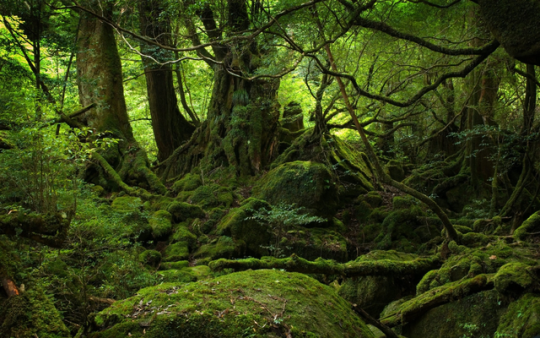
"If you have ever come upon a grove that is thick with ancient trees rising far above the usual height and blocking the view of the sky with their cover of intertwining branches, the loftiness of the forest, the seclusion of the spot, and your wonder at the unbroken shade in the midst of open space will create in you the feeling of a divine presence".
-Seneca the Younger on the numina.
#Seneca the younger#seneca#Lucilius#numina#numen#spirits#roman religion#nature#europe#tradition#indo-europeans#etruscan#julius evola#mircea eliade#mythology#myth#mos maiorum#Rome#jupiter#juno#minerva#divine presence#God
91 notes
·
View notes
Text

Pērkons / Perun / Perkūnas Proto-Indo-European god of thunder.
Heavy and inescapably powerful, he strikes awe in the hearts of those who pretend to not fear storms. Bringer of quenching rains, striker of oak trees, his lungs the bellows of roaring thunder.
#perun#god of thunder#slavic mythology#baltic mythology#indo european#mythology#there are many beautiful fat men in my mind and i should let them out#watercolour painting#my art
8 notes
·
View notes
Text



Text from:
The Sun Goddess: Myth, Legend and History by Sheena McGrath, 1997 (personal library)
#sun goddess#sun motif#embroidery#needlework#fiber art#mythology#indo european#Germanic#Scandinavian#slavic#saule#solntse#sunna#folk embroidery#sun chariot
15 notes
·
View notes
Text
Tapati, who is she, and why is she significant?
Well, first, she is a river goddess, but daughter of the sun god, Surya. However, her name means the hot one, the burning one. Interestingly enough, her name is tied to the river she's said to rule over - HOWEVER, language time.
Agni, a vedic fire god, has a scythian counterpart similar in name (and the scythian's are the older culture that broke off to form the vedic, indo iranian/iranian, and levant people as well as others - mixing, breeding, invading).
Back to Tapati.
Her name is cognate with the Scythian supreme fire goddess, Tabiti. Very interesting.
Tabiti is the supreme goddess of all things in the Scythian culture, primordial, the first flame, and much like Ianna (from Summerian mythology I talked about later) went on to inspire entire god/goddess roles, and had mantles inverted as interestingly enough, there's evidence some first/supreme deities were feminine, later flipped to male as cultures evolved - their places/roles attributes assigned to male gods and their places changed - made wives, daughters, so on a similar sort of flipping happens out of the Scythian culture/ proto Indo Europeans (that I've talked about) where the root word for a divine (doesn't mean good just divinely powered) being evolved along languages the ahura, asura, and asir (Norse) come from an older proto Indo-European/Scythian word.
In the Vedic stories, the daevas are good, the asura evil. In the Avestan and Iranian texts...the ahura/asura are good, and the daevas are evil.
We know the Norse asir and vanir warred also very interesting. And interesting how gods/goddesses are changed, subsumed, adopted and more, no? Tabiti was never represented in/by art, btw. Her representation was always an actual fireplace -- a flame. That's what you used.
There's historical written evidence in places of Agni's animal form being both referred to as a bull, AND a cow in places - different genders. And his flame being referred to as female in places.
In the Hindu bronze age, Agni had way more of a prominent role as fire did before later dwindling...as fire does (ooooo symbolic - okay that's just cuz of time and shifting priorities), but there are more similarities of these things in Baltic cultures -- but oh why?
(Why am I hopping around? Cuz gods/goddesses, archetypes, beats, stories all do too - all connected you muppets).
Well, did you know the closest cognate to Sanskrit is Lithuanian? It's kept so much of its proto Indo European roots.
Wait, a South Asian language and Baltic European language are cognates? YUH. WEIRD.
Almost like they both derived out of an older culture, language, their practices, beliefs and more.
And most of human history is just migrating, fucking, invading, and settling in new places and staying long enough until your features continue to change due to bow chicka wow wowing and environment.
Funny how that works.
Here's some Scythian clothing (oh btw, women were warriors/could be too - congrats you learned that).
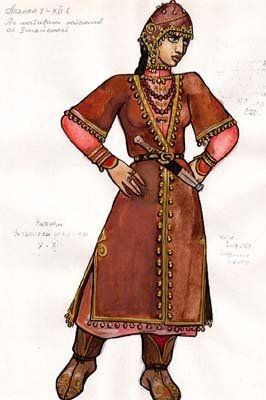
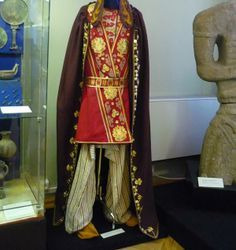
Does this style look familiar? Yeah, you can see the evolution/adaptation from this to later styles (bearing similarities) in Iran, India, Mongolia, the Baltics.
Cuz....y'know, that's where the proto Indo Europeans went about their biz and got jiggy with it and settled. Wow-wow-wee-wah! Okay now I'm done. Circular ish convo to get there but started with a fire goddess, it's relevant, but it all comes back to this.
Btw, this is also an important lesson for fantasy authors.
Because of all these connections and how old a bad ass fire goddess is, many of the oldest cultures are regarded as fire worshippers (like the Zoroastrians) did you know some keep an eternal burning flame? -- one is in Udvada Gujarat in India.
This flame has been said to have been kept burning for 1,500 years.
FIFTEEN HUNDRED.
And again, while most of the surviving Indo Iranic sun gods are male, there is evidence the ORIGINAL sun deity (including in/from the German, Baltic, and Slavic religions) was FEMALE.
#Tapati#sun god#sun goddess#Scythian culture#first gods were female#womens history#female history#proto indo european#indo european#Indian#Hindu#Baltic history#European history#deity worship#asian mythology#myths and legends#mythology#folklore#religions#religion changes things#ancient world#ancient history#ancient culture#did you know#fun fact#long thread#fantasy writers#fantasy authors#fantasy books#an important lesson
8 notes
·
View notes
Text
About the Development of Myths
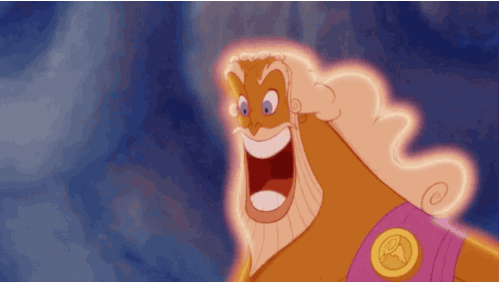
Okay, I will talk about more of the specific gods tomorrow again (starting first with the other gods from Stray Gods and then just looking over a variety of gods - I might start just with the greeks and then... venture into other mythologies). But first let me talk about the entire basis of what I have been talking about so far with the origins of Pan and Persephone: Their mythology is not a fixed thing.
Something that I would say education in general really fails on is properly expressing the amount of changes that cultures go through. I wrote about this before just in terms of history: There is not THE middle ages, not THE ancient Egypt, not THE ancient Greece and so on. All of those historical periods lasted for at least a thousand years. Now imagine that in like 500 years someone goes and looks at the 20th and 21st century as: "The World War and Globalisation period". Which I think there is a good chance this will at some point be known at (assuming we do not manage to eradicate our species before that, that is). Yet, you and I both know that if we were talking to someone from 1923 there would be very little we had in common.
Sure, this effect got massively accelerated thanks to the internet. But... You gotta have to assume that the Roman dude from 100 BC would also live in a very different world from the Roman dude of 200 BC. Because a hundred years is always going to involve a lot of change.
The reason we look at those old cultures as unchanging is, that they do not change anymore. And everyone who is neither working with that kinda stuff, nor is a complete geek, will just look at that culture as ONE FIRM THING rather than something fluent.
This is also true in terms of religion and related traditions, though we in the west are even more prone to it than other cultures. Because we do assume Christianity as this one thing. And the bible as this one unchanging thing. Hence the core believe is the same and, so the reasoning goes, was always the same. In fact, if you went to a religious school it is kinda how you were taught. The bible is one thing and always was the same thing. Only... It wasn't and even the basic we hve now does not matter.
Just look at the many Christian subreligions. They all in some way or form believe in Jesus, the one big God and all of that - but what they take from that widely differs. And the bible really does not have a big impact onto what ideals they hold and how they hold mass and how they pray and what not. If you think about it, you will easily see that, right? And if you just look a bit into what you might have learned about history in relation to Christianity, you will also know that this has changed. The role of Jesus has changed. How much the Holy Spirit is looked upon as an active actor. Which saints get venerated. All of that has changed a lot in just the last 50 years. And has changed a ton between the different countries.
And what I now need you to keep in mind that this was the exact same with the Ancient Gods and the religion attached to them. That holds true for the Greek Gods, the Roman Gods, the Egyptian Gods, the Norse Gods... all of them. The way they were worshipped changed over those thousand(s of) years they were worshipped.
So, let me once again talk about the Proto-Indo-European culture. Which is always a doosy and I love it.
The Proto-Indo-Europeans originates probably in the areas of modern day Ukraine and/or Romania and/or southern Russia some time around 5000 BC (scholars argue a bit about the exact temporal placement, just that it was somewhere between 7000 BC and 4000 BC). We do not really know a lot about them, because they did not write stuff down. But we do know that they had horses, were patriarchal, and that they worshipped a polytheistic pantheon that at least involved a Sky Father as one of the highest gods, who controlled the weather and was especially associated with storms and lightning.
These Proto-Indo-Europeans started breaking apart and travelling. Some into Asia, some into Europe and the Arabian/Persian areas. They brought with them their language and religion.
Now, it should be noted that they were not the "original humans" or anything. And that whereever they went... in most areas there were already other people living there, with whom they intermingled. Also whatever land they ended up settling was different, had different environments and this was included into their religious practice. Which made their religion over the years differ bit by bit. So from their pantheon sprang a lot of the pantheons we know today.
But... again, a lot of places they settled had already people living there. Who had their own worship. And that stuff often was also included and merged. Sometimes those other worships were very far reaching, sometimes very local. But some of those deities were picked up and either made part of whatever pantheon was there to come or was merged with an already existing god. And this happened again and again during the time that whatever pantheon was prayed to.
How do we know that, if it was not written down?
Well, mostly due to some archeology, but mostly due to comparative mythology and comparative linguistics. Two fields of science that basically involve people going over a lot of languages or mythologies (which, by the way, at times also includes fairytales and other oral narratives that are not necessarily held as "true", but still told) and basically finding things the reoccur. As well as going back over whatever written stuff we do have and noticing the shifts happening between a text written in 600 BC and a text written in 200 BC.
Now, for all the stuff we have two things that help a lot: a) The old Hindi writings and b) the written stuff from Egypt. Because both go really far back and were very well documented in writing. So basically we always can compare stuff to that and see shifts more clearly.
But, yeah... Technically all the pantheons are very much related. At some point Zeus, Jupiter, Diespiter, Thor, Tinia and Tian originated from the same character. You can even kinda see it in how similar the names are. Susanoo in Shinto-Mythology probably came from this, too, at least in the iteration we actually know about. (There can be some arguments made that a lot of the Shinto gods were shifted through the Buddhist contact, as the original indigenous Japanese cultures were very likely not Indo-European in origin. But given that the Ainu are the only culture whose oral tradition managed to survive this long, while the others either vanished or merged in a way influenced by Buddhism, which comes from Indo-European culture... yeah, it is there now.)
So, what I am saying: Mythology is shifting and always has been shifting. Same goes with religion. Hence the evolution of the Greek Pantheon.
Fun fact: Through comparative mythology we can also find the origins of YHW, the Abrahamitic god. Or God, as you might know him. He is a fascinating one, as he probably started out as a local god associated with harvest and weather in Southern Egypt and was then picked up by the Semitic cultures. He got a more pronounced role in the Canaanite pantheon, where at some point he merged with Baal, the war god. And through some trials and tribulations he finally ended up merging with El(hoim), the top god of the pantheon, with a part of the Canaanites splitting from the culture and developing into what would become the Jewish culture.
Super fascinating stuff. I love it.
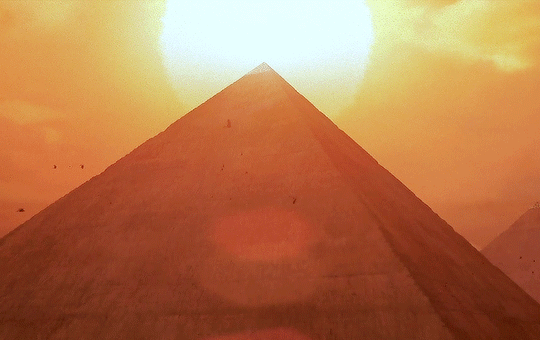
#stray gods#hades#history#mythology#proto indo european#early history#neolithic#ancient greece#ancient rome#ancient egypt#greek mythology#christian mythology#egyptian mythology
175 notes
·
View notes
Text

The Dagda
#celtic#pagan#irish#paganism#witch#scottish#celtic mythology#fantasy#art#pagan art#ireland#scotland#european#tradition#indo european#traditional#drawing#sketch#europe#heathen#polytheism#god#the gods
142 notes
·
View notes
Text
The 7 Classical Planets of Star Wars
As with the 12 Beatles albums of the zodiac, I shall first layout the correspondences, followed by a separate post describing the process by which I arrived at this understanding, and lastly a more detailed investigation of this system and its meaning.
The 7 Star Wars characters of the Classical Planets are:
The Moon : Princess Leia Mercury : R2-D2 Venus : C-3PO The Twin Suns : Obi-Wan Kenobi and Luke Skywalker Mars : Chewbacca Jupiter : Han Solo Saturn : Darth Vader
✨
#star wars#princessleia#princess leia#r2d2#c3po#r2d2 and c3po#chewbacca#han solo#luke skywalker#obi wan kenobi#darth vader#astrology#astronomy#indo european#mythology and folklore#starwars#greek mythology#death star#star wars droids#droid#ben kenobi#star wars rebels#joseph campbell#george lucas#babylonian
3 notes
·
View notes
Text
#norse gods#aesir#gods#viking mythology#scandinavian mythology#norse mythology#norse pagan#norse paganism#norse pantheon#norse polytheism#vikings#paganism#old norse#asatru#loki#eddas#prose edda#poetic edda#mythology#indo european#mythology poll#tumblr polls
19 notes
·
View notes
Text
Blackcrowing's Book Review Masterpost

Irish Paganism: Reconstructing Irish Polytheism, Morgan Daimler
The Book of the Great Queen, Morpheus Ravenna
The Druids, Peter Berresford Ellis
The Horse, the Wheel and Language, David W Anthony
Celtic Cosmology and the Otherworld, Sharon Paice MacLeod
The History of the Vikings: Children of Ash and Elm, Neil Price
A Practical Guide to Pagan Priesthood, Lora O'Brien
God Against the Gods, Jonathan Kirsch
A History of Pagan Europe, Prudence Jones & Nigel Pennick
A Guide to Ogam Divination, Marissa Hegarty
Polytheistic Monasticism, Jann Munin
Ireland's Immortals, Mark Williams
A Circle of Stones, Erynn Rowan Laurie
This is a growing list that will be added to as new reviews are made
My kofi
#book review#books#book#resources#masterpost#masterlist#blackcrowing#paganism#pagan#polytheism#celtic mythology#celtic paganism#celtic polytheism#norse mythology#Norse Paganism#norse polytheism#indo european#proto indo european#history#linguistics
51 notes
·
View notes
Text

"The beliefs and practices of pagan origin that survived Christianity were those that the men of the first Church called "pagan", that is, typical of the inhabitants of the "pagi", of the peasants. It was more difficult for the higher mythological systems, the great theogonies, to remain alive. The belief in a numen of the fountains, of rivers, of forests, or caves (or a family cult) could survived more easily than the complex cults of the Greeks and Romans".
-Julio Caro Baroja.
#mythology#paganism#europe#tradition#european religion#indo european#PIE#numen#Greeks#Romans#Celts#Caro Baroja#Christianity
23 notes
·
View notes